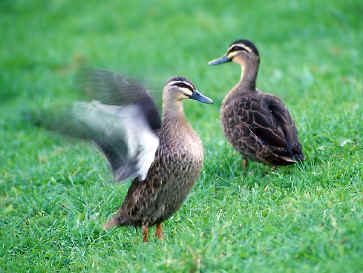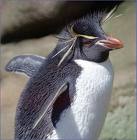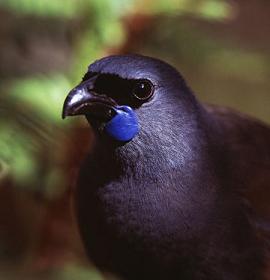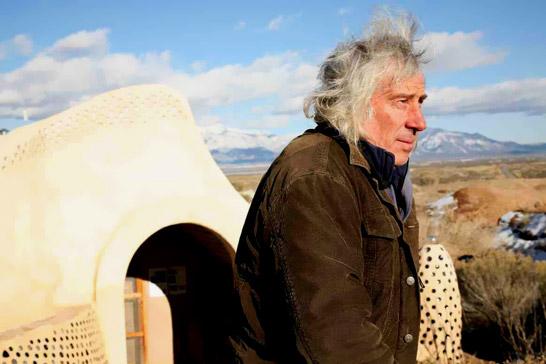

The G20 summit scarcely mentioned the "other" debt crisis
While most governments' eyes are on the banking crisis, a much bigger issue - the environmental crisis - is passing them by, says Andrew Simms. In the Green Room this week, he argues that failure to organise a bailout for ecological debt will have dire consequences for humanity.
"Nature Doesn't Do Bailouts!" said the banner strung across Bishopsgate in the City of London.
Civilisation's biggest problem was outlined in five words over the entrance to the small, parallel reality of the peaceful climate camp. Their tents bloomed on the morning of 1 April faster than daisies in spring, and faster than the police could stop them.
 |
 Here we are, faced with the loss of an environment conducive to human civilisation, and we find governments prostrate before barely repentant banks, with their backs to a far worse ecological crisis Here we are, faced with the loss of an environment conducive to human civilisation, and we find governments prostrate before barely repentant banks, with their backs to a far worse ecological crisis 
|
Across the city, where the world's most powerful people met simultaneously at the G20 summit, the same problem was almost completely ignored, meriting only a single, afterthought mention in a long communique.
World leaders dropped everything to tackle the financial debt crisis that spilled from collapsing banks.
Gripped by a panic so complete, there was no policy dogma too deeply engrained to be dug out and instantly discarded. We went from triumphant, finance-driven free market capitalism, to bank nationalisation and moving the decimal point on industry bailouts quicker than you can say sub-prime mortgage.
But the ecological debt crisis, which threatens much more than pension funds and car manufacturers, is left to languish.
It is like having a Commission on Household Renovation agonise over which expensive designer wallpaper to use for papering over plaster cracks whilst ignoring the fact that the walls themselves are collapsing on subsiding foundations.
Beyond our means
Each year, humanity's ecological overdraft gets larger, and the day that the world as a whole goes into ecological debt - consuming more resources and producing more waste than the biosphere can provide and absorb - moves ever earlier in the year.
The same picture emerges for individual countries like the UK - which now starts living beyond its own environmental means in mid-April.
 |
 Bad market design, feeble carbon reduction targets and the recession have all conspired to drive down the cost of carbon emission permits Bad market design, feeble carbon reduction targets and the recession have all conspired to drive down the cost of carbon emission permits 
|
Because the global economy is still overwhelmingly fossil-fuel dependent, the accumulation of greenhouse gases and the prognosis for global warming remain our best indicators of "overshoot".
World famous French free-climber Alain Robert, known as Spiderman, climbed the Lloyds of London building for the OneHundredMonths.org campaign as the G20 met, to demonstrate how time is slipping away.
Using thresholds for risk identified by the Intergovernmental Panel on Climate Change (IPCC), on current trends, in only 92 months - less than eight years - we will move into a new, more perilous phase of warming.
It will then no longer be "likely" that we can prevent some aspects of runaway climate change. We will begin to lose the climatic conditions which, as Nasa scientist James Hansen points out, were those under which civilisation developed.
Small dividend
As "nature doesn't do bailouts", how have our politicians fared who ripped open the nation's wallet to save the banks?
Not good.
According to the International Monetary Fund (IMF), the UK spent a staggering 20% of its GDP in support of the financial sector.
Yet the amount of money that was new and additional, announced in the "green stimulus" package of the Treasury's Pre-Budget Report, added-up to a vanishingly small 0.0083% of GDP.
Globally, the green shade of economic stimulus measures has varied enormously. For example, the shares of spending considered in research by the bank HSBC to be environmental were:
- the US - 12%
- Germany - 13%
- South Korea - 80%
The international average was around 15%. HSBC found the UK planned to invest less than 7% of its stimulus package (different from the bank bailout) in green measures.
Comparing the IMF and HSBC figures actually reveals an inverse relationship - proportionately, those who spent more on support for finance had weaker green spending.
So here we are, faced with the loss of an environment conducive to human civilisation, and we find governments prostrate before barely repentant banks, with their backs to a far worse ecological crisis.
Extreme markets
On top of low and inconsistent funding for renewable energy, the shift to a low carbon economy is being further frustrated by another market failure in the trade for carbon seen, for example, in the EU's Emissions Trading Scheme.

"Spiderman" scaled the Lloyds Building in support of the climate campaign
|
Bad market design, feeble carbon reduction targets and the recession have all conspired to drive down the cost of carbon emission permits, wrecking economic incentives to grow renewable energy.
Worse still, the difficulty of accounting to ensure that permits represent real emissions has led both energy companies and environmentalists to warn of an emerging "sub-prime carbon market".
Relying on market mechanisms is attractive to governments because it means they have less to do themselves. But they will fail if carbon markets are just hot air.
There seems to be a hard-wired link between memory failure and market failure.
As the historian E J Hobsbawm observed in The Age of Extremes: "Those of us who lived through the years of the Great Slump still find it almost impossible to understand how the orthodoxies of the pure free market, then so obviously discredited, once again came to preside over a global period of depression in the late 1980s and 1990s".
Perhaps the greatest failure is one of imagination.
Some people alive today lived through those past recessions and depressions. They know they can be nasty and need averting.
But the last time the Earth's climate really flipped was at the end of the last Ice Age, more than 10,000 years ago. No one can remember what that felt like.
Lessons of history
Looking forward, the IPCC's worst case scenario warns of a maximum 6C rise over the next century.
Looking back, however, indicates that an unstable climate system holds worse horrors.
Work by the scientist Richard Alley on abrupt climate change indicates the planet has previously experienced a 10C temperature shift in only a decade, and possibly "as quickly as in a single year".
And, around the turn of the last Ice Age, there were "local warmings as large as 16C".
Imagine that every day of your life you have taken a walk in the woods and the worse thing to happen was an acorn or twig falling on your head.
Then, one day, you stroll out, look up and there is a threat approaching so large, unexpected and outside your experience that can't quite believe it, like a massive gothic cathedral falling from the sky.
In tackling climate change we need urgently to recalibrate our responses, just as governments had to when they rescued the reckless finance sector.
Then officials had to ask themselves "is what we are doing right, and is it enough?"
They must ask themselves the same questions on the ecological debt crisis and climate change.
The difference is, that if they fail this time, not even a long-term business cycle will come to our rescue. If the climate shifts to a hotter state not convivial to human society, it could be tens of thousands of years, or never, before it shifts back.
Remember; nature doesn't do bailouts.
Andrew Simms is policy director of the New Economics Foundation (nef), and author of Ecological Debt: Global Warming and the Wealth of Nations
The Green Room is a series of opinion articles on environmental topics running weekly on the BBC News website. For more information, click here.














